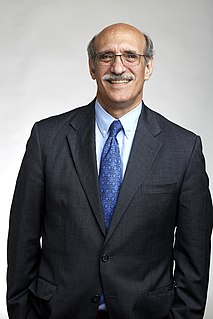Top 18 Quotes & Sayings by Martin Chalfie
Explore popular quotes and sayings by an American scientist Martin Chalfie.
Last updated on November 25, 2024.
I entered Harvard in 1965 not really knowing what I wanted to do. This confusion seems to have lost me a fellowship. G. D. Searle and Company, the pharmaceutical firm, had their home office in Skokie, and they gave a fellowship each year to a graduate from my high school that was going to major in science in college.
For a decade, I had been studying a transparent worm, the C. elegans. I immediately thought, if you could put the G.F.P. gene into C. elegans, you'd then be able to see biological processes in live animals. Until then, we had to kill them and prepare their tissues chemically to visualize proteins or active genes within cells.





















